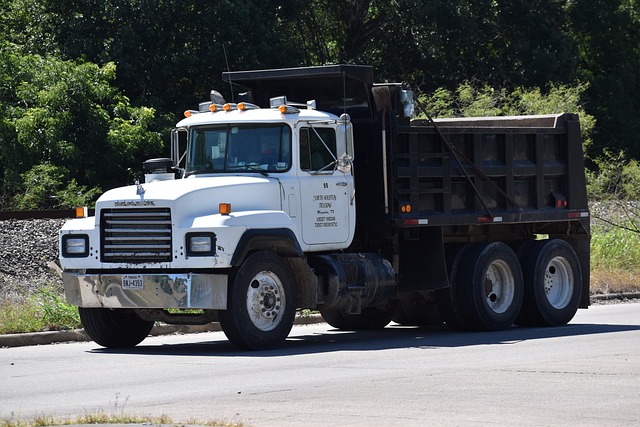Starting a trucking operation demands careful consideration of physical damage insurance as a critical risk management tool. This coverage protects against financial losses from vehicle, equipment, and cargo damages caused by accidents, natural disasters, or vandalism. By understanding policy scope, evaluating fleet characteristics, and identifying route hazards, businesses can tailor insurance to their unique needs. Standard options include collision and comprehensive insurance, while specialized endorsements offer further customization. Effective claims management and risk mitigation strategies, such as regular maintenance and driver training, complement physical damage insurance, ensuring trucking operations navigate risks smoothly and profitably.
Introducing our comprehensive guide to navigating the complex landscape of insuring a new trucking operation. In the world of trucking, understanding and managing risks is paramount for success. This article delves into the unique challenges of securing physical damage insurance for trucks, exploring essential aspects from assessing operational needs to selecting suitable coverage options. By the end, folks will be equipped with the knowledge to make informed decisions, ensuring their trucking ventures are protected against unforeseen events. Remember that, in today’s competitive market, navigating claims and implementing robust risk management strategies can be a game changer.
Understanding the Risks: Physical Damage Insurance for Trucks

Starting a trucking operation comes with its unique set of risks, particularly when it comes to insuring your valuable assets. Physical damage insurance for trucks is a crucial component in mitigating these risks. This type of coverage protects against financial loss incurred by physical damage to your vehicles, such as accidents, natural disasters, or vandalism. By understanding the extent and limitations of this insurance, trucking businesses can make informed decisions about risk management.
When considering physical damage insurance, it’s essential to know what is covered. This often includes replacement or repair costs for the truck itself, as well as any attached equipment. Policies may also cover liability for damages caused to third parties during an accident. However, exclusions and deductibles vary, so careful reading of the policy is essential. Understanding these risks and ensuring adequate coverage can help trucking operations avoid significant financial setbacks early on in their journey.
Assessing Your Trucking Operation's Needs

When setting up a new trucking operation, understanding your unique needs is crucial for successful risk management. Assessing your fleet’s potential risks and vulnerabilities is an essential first step. Consider factors like vehicle age, usage patterns, and driving areas, as these influence insurance requirements. For instance, newer trucks might require more extensive coverage due to higher replacement costs, whereas older vehicles may be less prone to expensive repairs, impacting the need for physical damage insurance.
Identify specific hazards associated with your trucking routes and operations. This could include loading/unloading risks, terrain challenges, or exposure to weather events. By identifying these, you can tailor insurance policies to cover potential losses from accidents, natural disasters, or cargo damage, ensuring comprehensive protection for your trucking business.
Types of Physical Damage Coverage Options

When insuring a new trucking operation, understanding various physical damage insurance options is vital. These coverages protect against unexpected events that can cause harm to vehicles and equipment. Common types include collision insurance, which compensates for damages in accidents, and comprehensive insurance, covering broader incidents like theft, vandalism, or natural disasters.
Additionally, certain policies may offer specific endorsements for specialized risks, such as cargo damage or liability associated with loading/unloading processes. Insurers also provide options for fleet management, where they track vehicle usage and maintenance, helping to prevent and manage potential physical damage.
Navigating Claims and Risk Management Strategies

Navigating Claims and Risk Management is a crucial aspect of running a successful trucking operation. With the potential for significant financial losses due to accidents, cargo damage, or legal liabilities, efficient risk management strategies are essential. Physical Damage Insurance plays a pivotal role in protecting against these risks by covering costs associated with damaged vehicles, equipment, or cargo. By understanding and implementing robust claims processes, trucking businesses can minimize downtime and financial strain, ensuring operations remain seamless and profitable.
Effective risk management involves proactive measures to mitigate potential hazards. This includes regular vehicle maintenance checks, driver training programs, and adherence to safety protocols. By fostering a culture of safety and accountability, trucking companies can reduce the likelihood of incidents that could lead to costly claims. Additionally, staying updated with industry regulations and adjusting insurance policies accordingly is vital for comprehensive risk coverage.
Insuring a new trucking operation presents unique challenges, but understanding and managing these risks is crucial for success. By thoroughly assessing your operation’s needs and exploring various physical damage coverage options, you can mitigate potential losses effectively. Remember that navigating claims and implementing robust risk management strategies are key to ensuring the longevity and profitability of your trucking business. Prioritizing adequate physical damage insurance will provide peace of mind and safeguard your investment in this dynamic industry.
